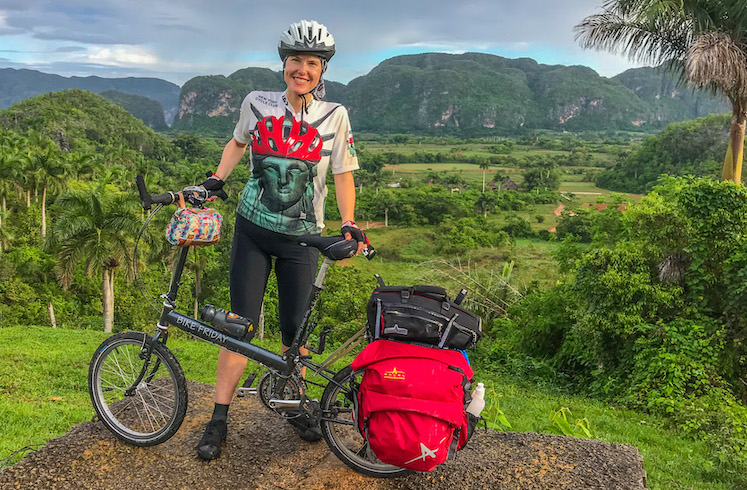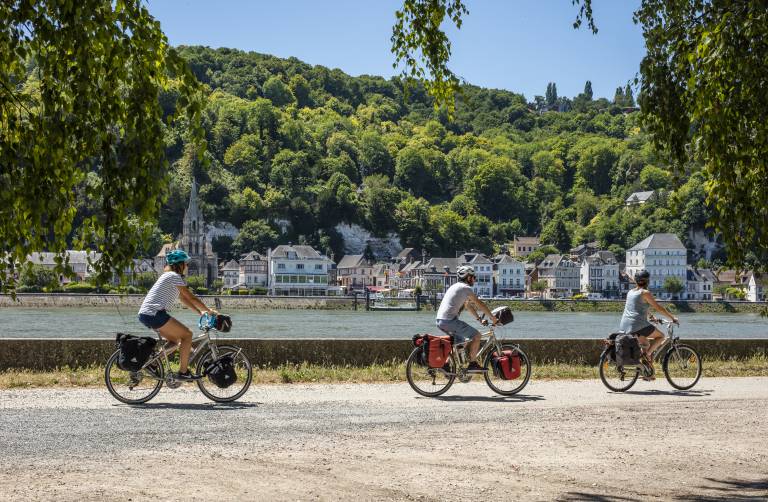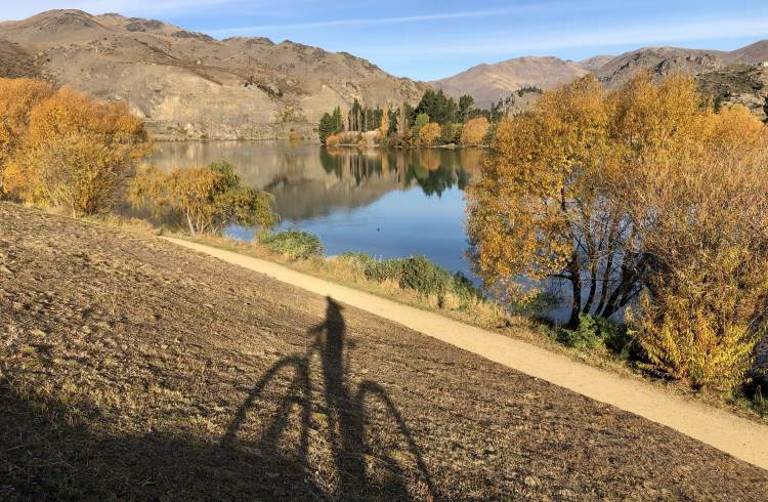How to Plan and Pack For Your Next Cycling Holiday
Cycling lets you explore the world at your own speed, but it requires the right planning to make it memorable for the right reasons.
 Photo © Getty Images / GibsonPictures
Photo © Getty Images / GibsonPictures
- Planning your trip
- Training for your trip
- Bringing your own bike vs renting
- Essential gear packing list
Walking may be fun and leisurely but it’s slow so you can’t cover much ground. Cars, on the other hand, quickly get you from point A to point B but you rush by so rapidly that you miss many details and opportunities. Bike touring, on the other hand, offers practically the perfect pace for exploration. You set your own pace, go as long or short -distance as you like, and you travel at a speed that allows you to cover a lot of ground without missing many details. Bike touring is very different than traditional travel, however, so if you’re considering a holiday on two wheels, here’s what to know and how to pack.
Planning your trip
Not all types of cycling holidays are created equal so consider the sort of trip that appeals to you; for instance: mountain biking, flat road cycling, road cycling through the mountains, or gravel biking. You could also consider what destinations you'd like to visit and then research the types of cycling that destination offers. For instance, some countries may be completely flat or mostly mountainous but a country such as Slovenia has both flat areas and very hilly regions so it can accommodate different styles of cycling tours.
If you’ll be doing a multi-day loop cycling trip, in Iceland, for example, you could start and finish in Reykjavik, where you could probably stash your bike box at your hotel while you’re riding. If, instead, you’ll be doing a one-way route from A to B, you’ll need to get yourself (and your bike) back to the starting point to fly back out. Otherwise, you’ll need to figure out how to box up your bike to fly out of destination B if you left your box in destination A. In some countries, such as the United States, you can find a bike box at a local bike shop in the city you fly out of (confirm this in advance) but in other countries, such as Cuba, you’ll be hard-pressed to find a bike box anywhere so you’ll want to figure out these details before you arrive.
Finally, know in advance what sort of accommodation is available. For instance, while camping may be an option every night, you may only want to camp a few nights – or not at all. Whether you’ll be camping or staying in hostels and hotels, you’ll probably want to make reservations in advance to ensure you have somewhere to stay if you’re in an area with few options or options that fill up quickly (those in or near national parks, for example).
If you don't want the hassle and responsibility of organizing everything yourself, there are plenty of bike tour companies around the world that can also organize your bike and helmet rental, plan the route, book your accommodation and arrange for your luggage to be waiting in your next night's bedroom. They can also offer guides to accompany you or leave you to it with a map and directions.
Training for your trip
Regardless of how far you ride, it would be wise to do a bit of training before your bike tour. After all, even if you ride to work every day, you’re probably not riding with fully loaded panniers and several large bottles of water, which add quite a bit of weight. Figure out what gear you’ll be bringing with you, load up your bike at least as heavy as you expect it to be on the trip, and begin training for your ride. If you plan to ride 50 mi (80km) per day during your trip, start your training by riding 50 mi per day on the weekends as you get in shape. If riding that distance on just the weekends is a challenge, then you know that you’ll need to do more training before your trip.
Also, make sure you’re preparing for the climate and terrain in the destination you’ll be visiting, as riding 50 mi on flat pavement is not representative of riding 50 mi on rocky dirt roads that wind up and down along steep mountain hills. Also, consider that if you’re heading to a climate very different than your own, the riding will also be more difficult. For instance, if you’re training during warm spring weather in the global north but heading to ride in the hot and humid tropics, plan to expend quite a bit more energy during your rides.

Bringing your own bike vs renting
Most serious cyclists prefer to bring their own bikes for long bike tours because they know the bike will fit them perfectly. After all, riding hundreds of miles on a bike that’s too small or too large is not only impractical and inefficient but also uncomfortable and unpleasant. That said, it’s quite a hassle to break down and pack your bike to fly, put it back together when you get to your destination, then break it down again to fly home, then reassemble it when you get back. You also have to find a previously mentioned bike box (which can be very difficult in some destinations) and if your bike is carbon, you’ll want to be very careful when wrapping it to make sure it doesn’t crack.
If you want to skip the hassle of packing your bike, look into local bike shops at your destination to see if they rent the sort of bike you’d like to use. Confirm the correct size and the condition of the bike and get measured at your local shop if you’re not sure what size you are. In some cases, bike shops may also rent panniers for you to carry all your gear but, if they don’t, confirm in advance that the bike you’re renting has racks that can accommodate your panniers. If not, you’ll need to also bring your own racks, in which case, confirm in advance that the bike can fit your racks. If you do rent a bike, you may still want to bring your own saddle, since you don’t want to risk developing any saddle sores during your trip.
Essential gear packing list
To have a successful trip, you’ll want to bring a good selection of comfortable cycling clothes, accessories, and tools. If your bike has any specialty or hard-to-find parts, you may want to bring replacements with you, especially if you’ll be cycling through rural areas where high-end bike shops will be hard to come by.
To get you started, here's an essential bike touring gear checklist:
- Panniers
- Multi-tool
- Spare tubes
- Tire levers
- Wrench
- Bike lube
- Spare chain
- Travel bike pump
- Patch kit
- Fenders
- Bike lights (front and back)
- Helmet
- Water purification device
- Hydration pack or water bottles
- Rain jacket
- Hat
- Gloves that provide padding and sun protection
- Socks
- Padded shorts/pants
- Cycling jerseys
- A change of clothes to sleep in
- Cycling shoes
- Sunglasses
- First aid kit (band-aids, gauze, moleskin, disinfectant)
- Toothbrush and toothpaste
- Sunscreen
- Prescription medications
- Portable charger
- Topo map
- Compass
- If camping, also bring a tent, sleeping mat, sleeping bag, and headlamp.



1 Comment
Great articles thank you for them